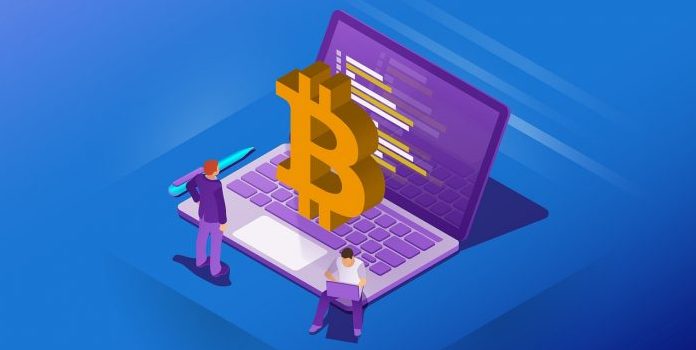The Federal Reserve last week reiterated its commitment to an unprecedented inflation-raising campaign.
Specifically, the Fed aims to push the inflation rate above 2% for an extended period.
The risk for investors is that central bankers succeed in their mission to depreciate the currency more rapidly – perhaps even more rapidly than intended or acknowledged in the official (understated) inflation data.
Inflation is a corrosive force that eats away at the real value of savings and investments.
It is perhaps the biggest threat looming on the horizon for millions of retirees who have been steered into assets marketed as “conservative” – such as dollar-denominated money market accounts, bonds, and fixed annuities.
Investors who are savvy about the inflation threat know that low-yielding financial instruments are especially vulnerable to losing value in real terms. But those seeking protection from inflation can still run into trouble by venturing into flawed “inflation protected” assets.
Beware of the following:
Treasury Inflation Protected Securities (TIPS). Though they could fare relatively better than conventional fixed-rate bonds, TIPS are flawed. They are pegged to the federal government’s self-serving Consumer Price Index gauge which tends to understate real-world consumer prices.
Foreign currencies. Assets denominated in foreign currencies may benefit from a decline in the U.S. dollar on foreign exchange markets. But foreign fiat currencies are no safe haven from inflation.

There are no truly sound national currencies out there. The fact that one is gaining against another over any given period doesn’t mean it’s not also depreciating in real terms.
Central banks around the world are engaged in competitive devaluation, and lll fiat currencies have been falling against gold.
If one currency is strengthening against others at any given time, that doesn’t mean it’s gaining purchasing power – it’s probably just performing less bad than the others.
Cryptocurrencies. Some Bitcoin bugs tout the cryptocurrency as “digital gold.” They are mistaken, however.
While there is certainly utility and value, Bitcoin is a purely digital asset with no tangible backing. Moreover, there is no limit on the number of competing digital currencies that can be created.
Cryptocurrencies may have explosive upside potential, but they also carry huge downside risk – irrespective of the inflation rate.
Commodity Instruments. In theory, owning a basket of commodities is a good hedge against inflation. In practice, you probably don’t want to store barrels of oil and bushels of wheat in your basement!
That means you’d have to own speculative derivative instruments that often fail horribly at tracking the price movements of the underlying commodities. Commodity futures, ETFs, and the like are suitable only for short-term speculation, not long-term inflation protection.
Gold and silver mining stocks. Mining companies stand to benefit greatly from rising metal prices. But they are also vulnerable to rising energy and labor cost, carry political risk and the risk of poor management, and can become unstable during a financial crisis.
To be sure, miners can play a role in an aggressive investor’s inflation protection portfolio, they are no substitute for a core holding in physical precious metals.
Numismatic coins. Investors who grasp the need to hold some physical precious metals as part of an inflation protection strategy can still make a big mistake if they buy pricey numismatic coins. The large collectible premium attached to numismatics will not necessarily rise with inflation or match the gains on spot metal prices.
Hard Money Is the Ultimate Inflation Hedge
Gold is a timeless, immutable monetary asset, still widely held by central banks.
In former Federal Reserve chairman Alan Greenspan’s words:
“For more than two millennia, gold has had virtually unquestioned acceptance as payment. It has never required the credit guarantee of a third party… Today, the acceptance of fiat money — currency not backed by an asset of intrinsic value — rests on the credit guarantee of sovereign nations endowed with effective taxing power, a guarantee that in crisis conditions has not always matched the universal acceptability of gold.”
For these reasons, gold and its junior partner silver are an indispensable long-term hedges against inflation and political/financial turmoil.
“According to the World Gold Council, in years when the inflation rate has exceeded 3%, the price of gold has increased 15% on average.”
Over a period of decades and even centuries, the purchasing power of gold and silver tends to remain relatively constant.
The catch is that precious metals markets don’t always track inflation well in the near term.
They can suffer large cyclical declines over periods when other asset classes may be gaining.
Of course, they can also post huge gains when conventional markets are falling – that’s what makes them essential for proper portfolio diversification.
According to the World Gold Council, in years when the inflation rate has exceeded 3%, the price of gold has increased 15% on average.
Silver has the potential to do even better in an environment of rising inflation – delivering holders huge gains in real purchasing power.
When the purchasing power of the U.S. Federal Reserve note takes a dive, hard money will ultimately shine…Original Source…
 Stefan Gleason is President of Money Metals Exchange, a precious metals dealer recently named “Best in the USA” by an independent global ratings group. A graduate of the University of Florida, Gleason is a seasoned business leader, investor, political strategist, and grassroots activist. Gleason has frequently appeared on national television networks such as CNN, FoxNews, and CNBC and in hundreds of publications such as the Wall Street Journal, The Street, and Seeking Alpha.
Stefan Gleason is President of Money Metals Exchange, a precious metals dealer recently named “Best in the USA” by an independent global ratings group. A graduate of the University of Florida, Gleason is a seasoned business leader, investor, political strategist, and grassroots activist. Gleason has frequently appeared on national television networks such as CNN, FoxNews, and CNBC and in hundreds of publications such as the Wall Street Journal, The Street, and Seeking Alpha.

